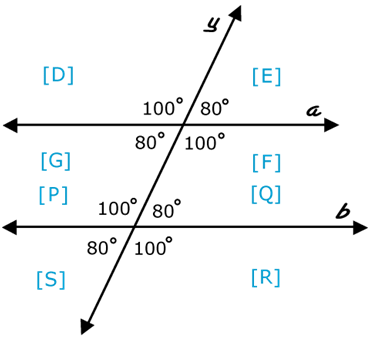
Together, the supplementary angles form a straight line. For example, two angles, 130 o and 50 o are supplementary because their sum, 130 o + 50 o = 180 o. Two angles are said to be supplementary if their sum is 180 o. Therefore, the combination of these two words means “something when supplied to complete a thing”. So, how do we define supplementary angles? Let us find out. Here, the word “Supplere” means “supply”, while the meaning of the word “Plere” is “fill”. The word “supplementary” has been derived from two Latin words “Supplere” and “Plere”. Where did this term supplementary come from? The Origin of the word Supplementary Let us understand what supplementary angles are all about.īefore we look into the concept of supplementary angles, let us first understand the meaning of the term supplementary. One of the important terms in geometry is supplementary angles. Depending upon the placement of the angles, there may be adjacent angles, opposite angles, corresponding angles, alternate angles and so on. Similarly, a pair of angles can be complementary angles or supplementary angles depending upon their sum. For example, an angle may be a right angle, an acute angle or an obtuse angle, depending upon the angle it makes with a straight line. In geometry, different names are given to different angels and their combinations depending upon the type of angles they make. Adjacent Angles and Supplementary Angles.Complementary angles add up to form a right angle or gives 90 0 while supplementary angles added together gives 180 0.What is the difference between Complementary and Supplementary Angles? Opposite angles of a cyclic quadrilateral are supplementary.Adjacent angles of a parallelogram are supplementary.That is, if both are adjacent and share a common side (or a vertex), the other sides of the angles coincide with a straight line.įollowing are two theorems that consider supplementary angles

In another way, two angles residing on any point of the straight line (only two angles) are supplementary. Two angles are said to be supplementary when their sum is 180 0. Likewise, “co”tangent and “co”secant are also the values of the complementary. In fact, cosine of an angle is the sine of its complementary angle. The complementary angles of these angles are equal to each other.Īlso in trigonometric ratios, the prefix “co” comes from the complementary. Consider two angles that are equal in size.

The principles of geometry stated by Euclid 2500 years ago are true today too. The development culminated in “The Elements”, the timeless and renowned book by the great mathematician Euclid, who is often considered as the “Father of Geometry”. The basic concepts of geometry in the present day mathematical form were developed by the ancient Greeks. Geometry is the branch of mathematics which study the shapes and size of the figures and space. Geometry, a pillar of mathematics, is one of the oldest forms of mathematics.


 0 kommentar(er)
0 kommentar(er)
